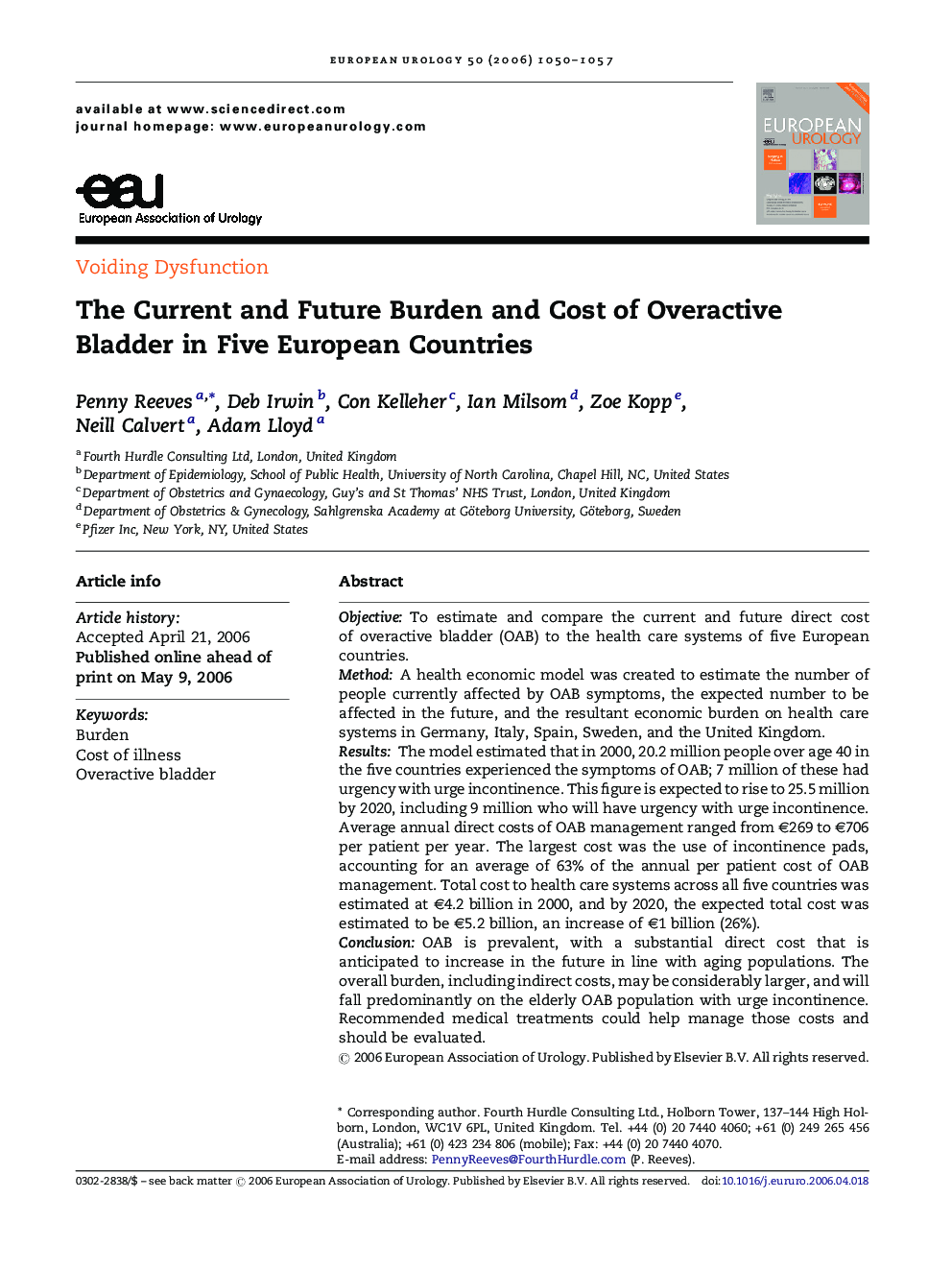| Article ID | Journal | Published Year | Pages | File Type |
|---|---|---|---|---|
| 3930073 | European Urology | 2006 | 8 Pages |
ObjectiveTo estimate and compare the current and future direct cost of overactive bladder (OAB) to the health care systems of five European countries.MethodA health economic model was created to estimate the number of people currently affected by OAB symptoms, the expected number to be affected in the future, and the resultant economic burden on health care systems in Germany, Italy, Spain, Sweden, and the United Kingdom.ResultsThe model estimated that in 2000, 20.2 million people over age 40 in the five countries experienced the symptoms of OAB; 7 million of these had urgency with urge incontinence. This figure is expected to rise to 25.5 million by 2020, including 9 million who will have urgency with urge incontinence. Average annual direct costs of OAB management ranged from €269 to €706 per patient per year. The largest cost was the use of incontinence pads, accounting for an average of 63% of the annual per patient cost of OAB management. Total cost to health care systems across all five countries was estimated at €4.2 billion in 2000, and by 2020, the expected total cost was estimated to be €5.2 billion, an increase of €1 billion (26%).ConclusionOAB is prevalent, with a substantial direct cost that is anticipated to increase in the future in line with aging populations. The overall burden, including indirect costs, may be considerably larger, and will fall predominantly on the elderly OAB population with urge incontinence. Recommended medical treatments could help manage those costs and should be evaluated.
